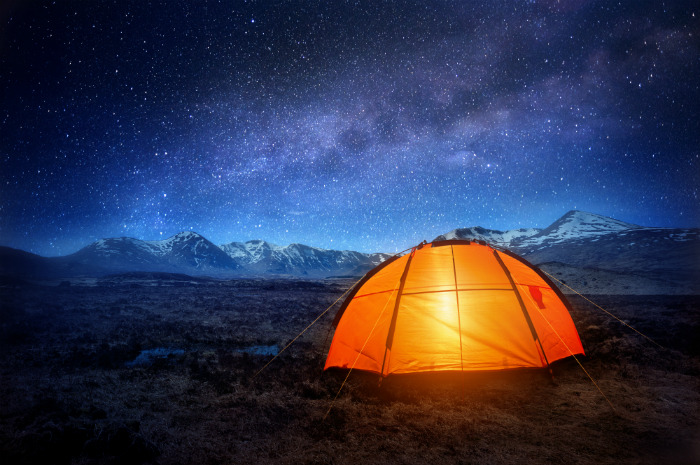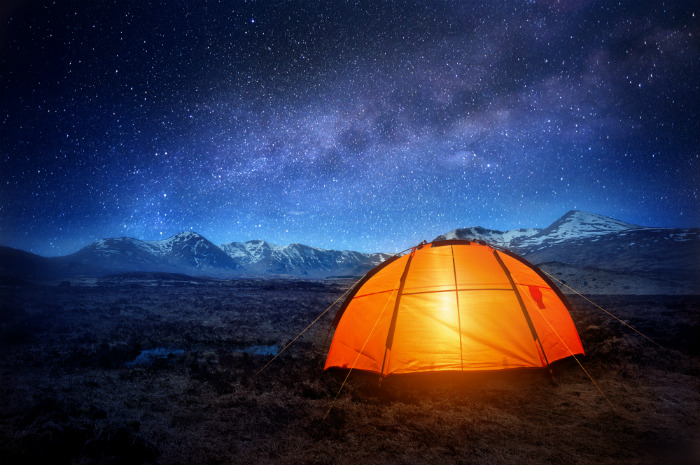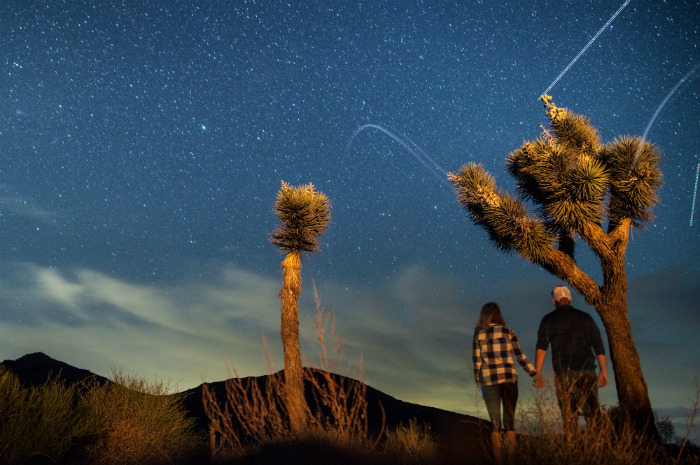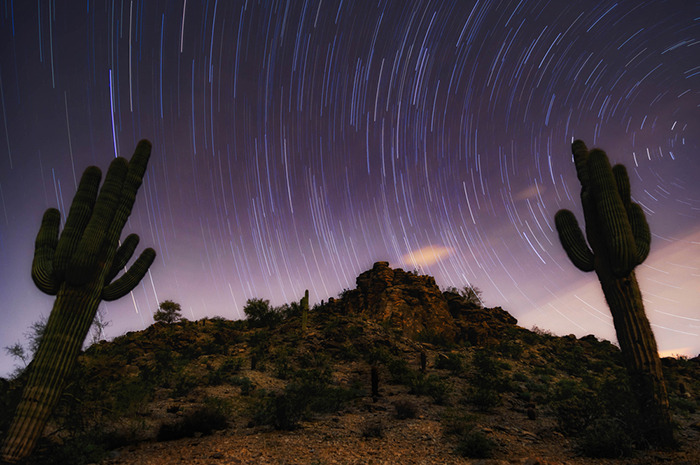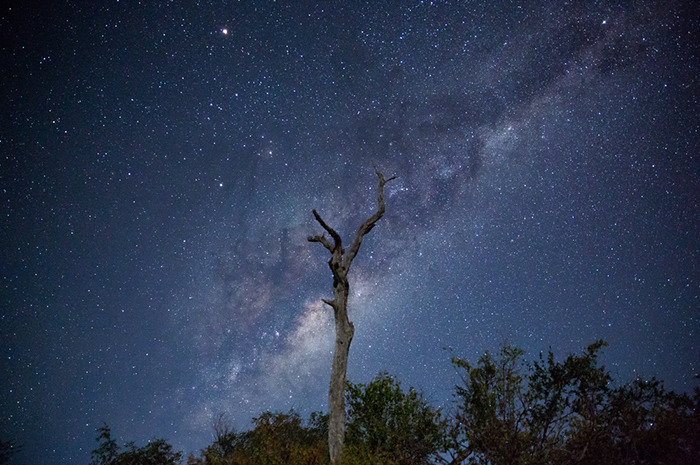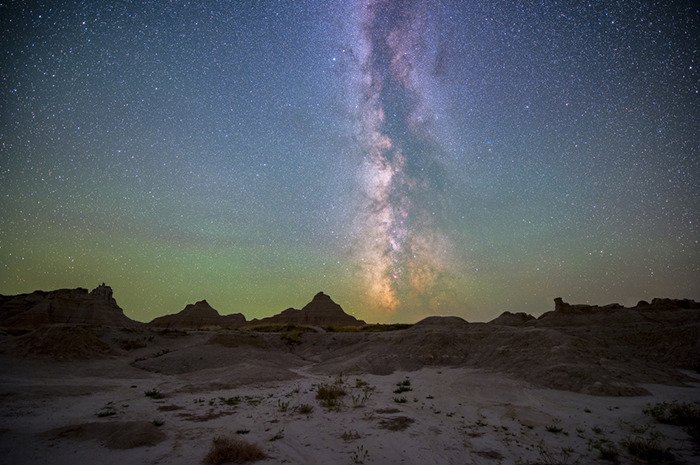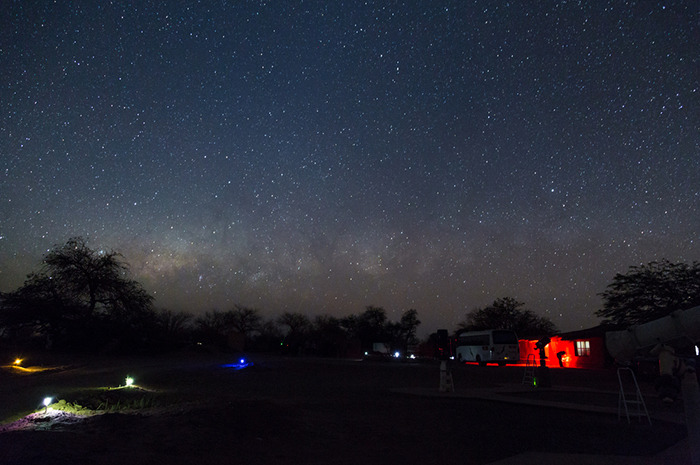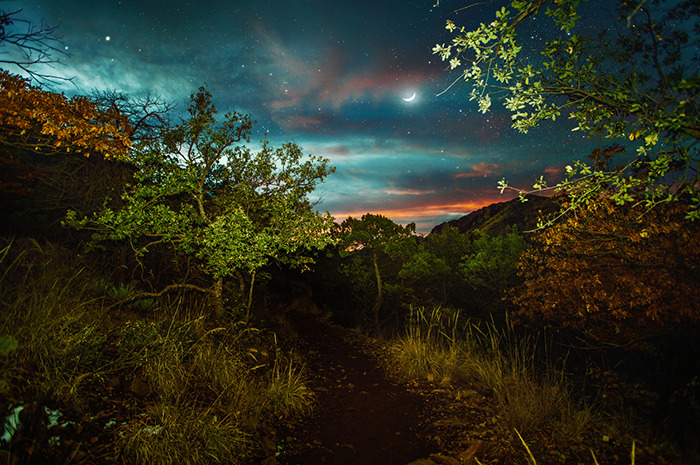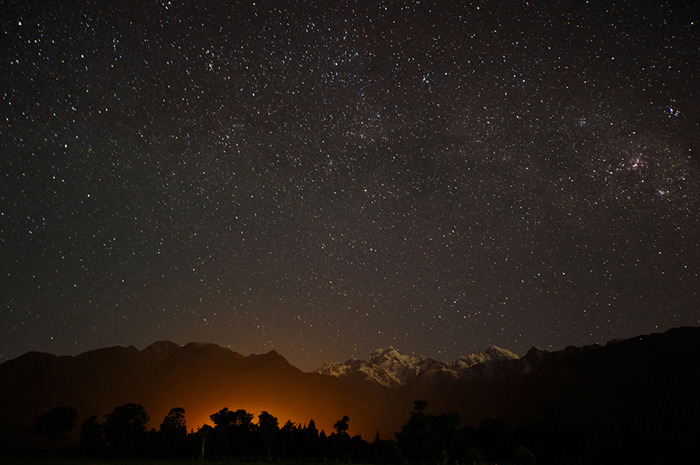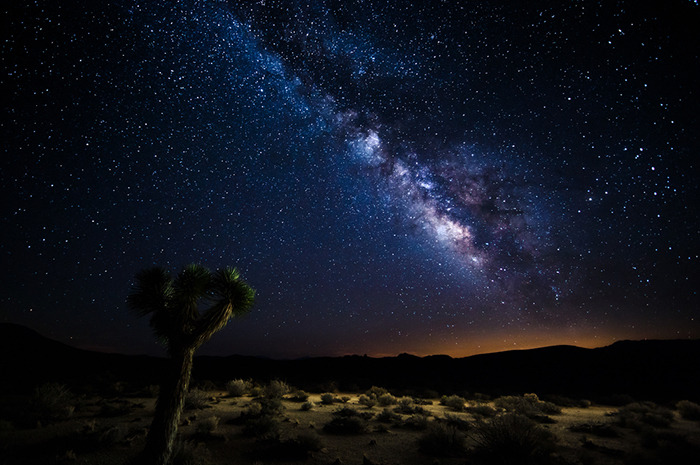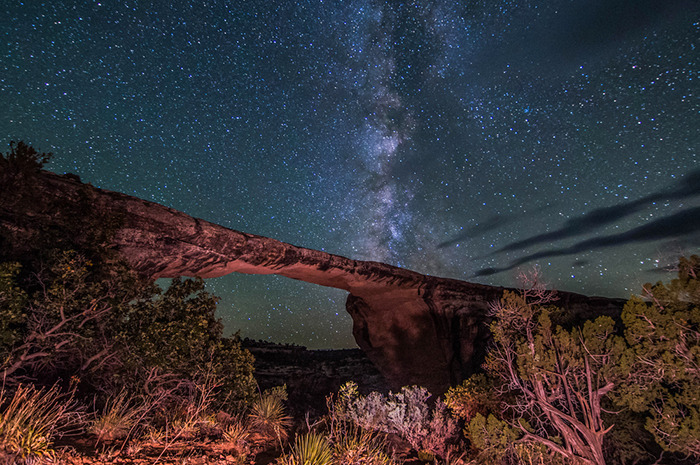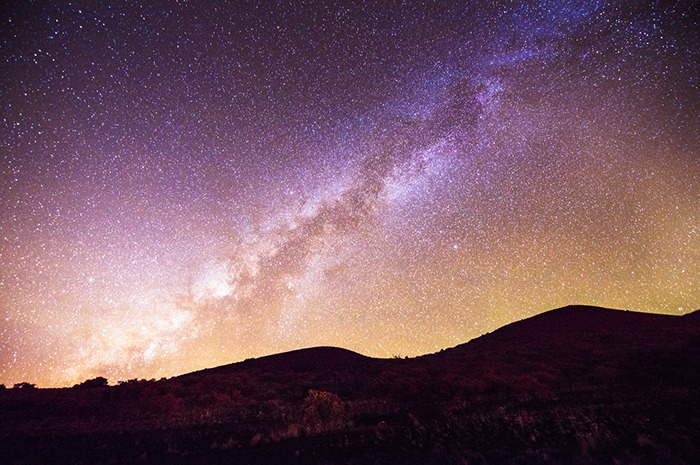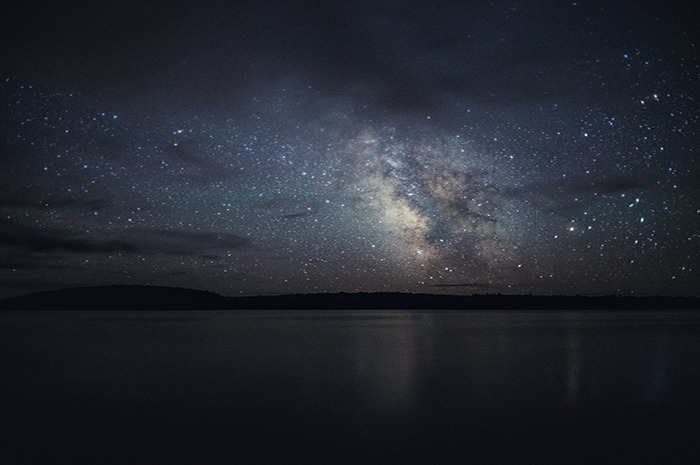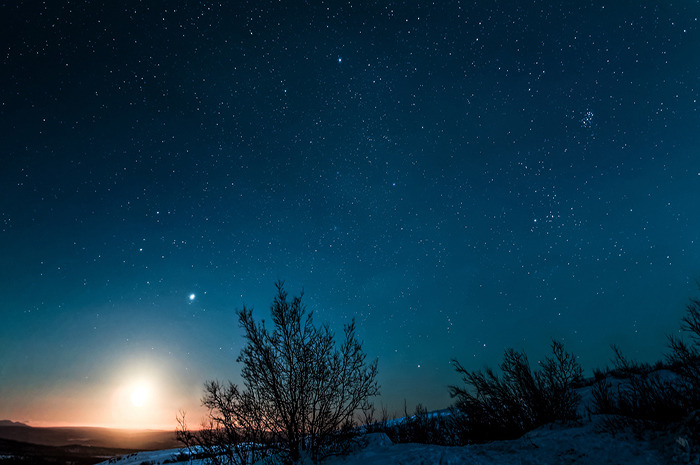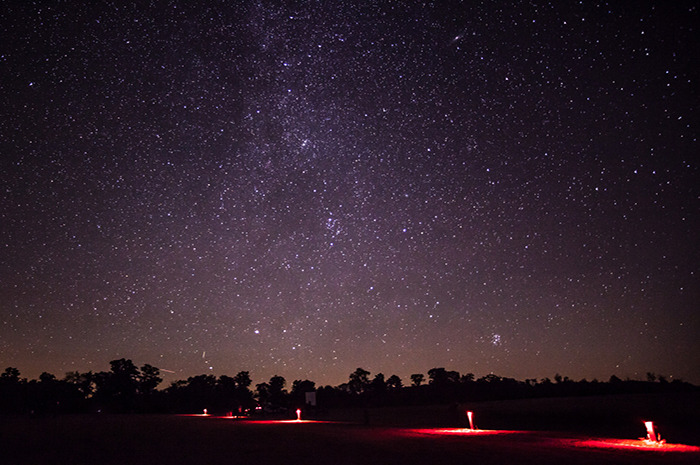Most Spectacular Places To Go Camping And Stargazing This Year
Most Spectacular Places to Go Camping and Stargazing This Year
Have you ever met a child who didn't want to be an astronaut at some point? He or she probably forgot about that dream as artificial city lights and pollution diminished the majesty of dark skies. Eventually they stopped thinking about the Milky Way because they can barely see more than a few hundred stars from an urban park, even if it's one of the best. Some wild spots have kept their natural nightscape and made it their goal to preserve the awe-striking experience of stargazing.
Jumbo Rocks Campground, California
Make sure to bring a pair of binoculars. The unpolluted views of distant space are incredible. If you choose to camp at the Jumbo Rocks Campground in Joshua Tree National Park, you can set up a tent among the park's giant granite rock formations. You will be about 1,000 feet higher than some of the park's other sites, which is why you'll be able to enjoy some of the best views of Southern California's night skies.
Exmouth, Australia
Uluru, also known as Ayers Rock, a massive sandstone monolith, is said to be Australia's best stargazing location because of its remoteness. There is nothing around it for many miles. This is another reason why the sky is so clear and there is practically no pollution. "When the moon disappears, the milky way arouses its whole spectrum of colors and shows all its beauty. The center of our galaxy slowly lays down above the famous rock, until the milky way finally sets down and lets the Magellanic Clouds rule the sky," according to Urulu – Australia.
Phoenix, Arizona
Warm Arizona nights are the perfect backdrop to begin your stargazing journey. Some of the best spots in Phoenix and its surrounding area that are ideal for a celestial exploration include White Tank Mountain Regional Park where you can see several planets, star clusters, nebula, and galaxies through a telescope; the Verde River Area, a silent and pitch-black desert; the Tempe Town Lake where you can sign up for nighttime class for a glow-in-the-dark paddling experience; and the Cave Creek Regional Park where you can see the remains of stars that have died, as well as places where stars are just beginning to form.
Galloway Forest Park, Scotland
Due to its remoteness, the Galloway Forest Park has been awarded the status of being one of only four "Dark Sky Parks" in the western world. The largest forest park in Scotland – over 185,000 acres – has very few buildings, making it easy to see more than 7,000 stars from anywhere. The naked eye can even catch the Andromeda Galaxy and the Aurora Borealis, which will disappear for the next 12 years. Unregulated camping is allowed; there are five "bothies," small and unlocked structures, which anyone can use.
Kruger National Park, South Africa
Kruger National Park, one of the world's most spectacular, isolated and away from pollution and urban artificial lights, has many rest camps with many bungalows and cottages that are perfect for families and groups wanting self-catering accommodation. Bonus: Kruger is the largest game reserve in South Africa and you can see the "Big Five" there – lions, elephants, buffalos, leopards and rhinos.
Castle Trail, Badlands National Park, South Dakota
Night sky viewing is offered on Friday through Monday nights, according to NPS. After the evening ranger program, you are welcome to stay and continue enjoy the stars. Telescopes are provided. The entire campground is equipped with 96 level campsites, and each offers striking views. On any given night, you will be stunned by more than 7,500 stars. Especially extraordinary is the clarity of the Milky Way Galaxy. Other views include star clusters, nebulae, planets and moons, the NPS says.
The Atacama Desert, Chile
Camping in the Atacama Desert can be a lonely and dangerous experience as there are no signs or marks once you get off the road. But don't let that stop you from seeing one of the most amazing dark skies in the world. Just go on a camping/stargazing expedition. You'll get to pitch a tent under a canopy of stars and visit the famous Paranal Observatory. The Atacama Desert is a very, very dry place, making it ideal for stargazing. There are few clouds and no pollution.
Big Bend National Park, Texas
Big Bend is known as one of the outstanding places in North America for stargazing as it has the least light pollution of any other National Park unit in the lower 48 states, according to NPS. There are no visible lights indicating a house or even a town. You can see the Milky Way in its full glory and more than 2,000 stars on a clear night. Depending on when you decide to go camping, you may need to make a reservation.
Aoraki/Mt. Cook National Park, New Zealand
This is a rugged land of ice and rock, with 19 peaks over 9,800 feet, including New Zealand's highest mountain, Aoraki/Mount Cook. The White Horse Hill Campground is just about a mile and a half from Aoraki/Mt Cook Village, which is one of the best places in the country for stargazing as there are no cities or even small towns nearby. The night sky is crystal clear and ringed by mountain ranges, according to the Department of Conservation.
Telescope Peak Trail, Death Valley National Park, California
With a name like Telescope Peak, you are bound to have incredible stargazing views atop the highest point in Death Valley National Park. From the peak of this trail in California, you can see over one hundred miles in any direction. Averaging less than two inches of rain per year, you're almost guaranteed clear skies. Visit April, May, September or October for the most comfortable nighttime temperatures.
Navajo Trail, Bryce Canyon National Park, Utah
Begin at Sunset Point and travel down the stunning canyons of Utah. Watch the bright stars shine among the hoodoos rock formations. At night, you can clearly see sky objects from the canyons. The park occasionally offers astronomy programs even in the winter.
Natural Bridges National Monument, Utah
Natural Bridges National Monument is another "Dark Sky Parks," one of four in the western world. The 13-site campground is open year-round on a first-come, first-served basis. Natural Bridges has made protecting its dark sky a priority so that people can enjoy the stunning river of lights formed by the Milky Way rising over Owachomo Bridge, the NPS says.
Mauna Kea, Hawaii
Camping permits for the Mauna Kea State Park can be applied for no more than 30 days in advance. The 13,803-foot dormant volcano on the Big Island is home to the world's largest astronomical observatory which has the largest optical telescope. There are free nightly programs at the Onizuka Center for International Astronomy. There is no pollution because of a tropical inversion cloud layer about 2,000 feet thick, well below the summit, that isolates the upper atmosphere from the lower moist maritime air and ensures that the summit skies are pure, dry, and free from atmospheric pollutants.
Kejimkujik National Park, Canada
Kejimkujik was designated as a Dark Sky Preserve in 2010, according to Parks Canada. "Visit the Sky Circle and gaze at brilliant celestial bodies through an on-site telescope, binoculars, or with the naked eye. [...] Go deeper – discover how stars have inspired centuries of story, song and legend. And occasional night-time canoe excursions offer a truly magical night-sky perspective."
Camp Ripan in Kiruna, Sweden
Camp Ripan in Kiruna has its own stargazing room. There are several caravan and tent sites. Kiruna, close to the border with Norway and Finland, is a popular destination for witnessing the glowing Northern Lights. You have the option of sleeping in an igloo in the winter. The area is home to many space research centers because of its remoteness and lack of air pollution.
Cherry Springs State Park, Pennsylvania
Another "Dark Sky Parks" location, this remote and wild state park sits high atop a mountain in Pennsylvania as one of the best places on the eastern seaboard for stargazing and astronomy enthusiasts. Cherry Springs State Park, named for its large stands of black cherry trees, is an 82-acre state park surrounded by the 262,000-acre Susquehannock State Forest. The park prides itself on its exceptionally dark skies and efforts to prevent light pollution.
